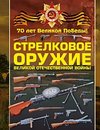
-
 Anglický jazyk
Anglický jazyk
Historical regions in Ukraine
Autor: Source: Wikipedia
Source: Wikipedia. Pages: 75. Chapters: Ruthenia, Galicia, Carpathian Ruthenia, Cossack Hetmanate, Kresy, Budjak, Red Ruthenia, Wolyn Voivodeship, Little Russia, Belz, Oium, Podolia, Yekaterinoslav Governorate, New Serbia, Ruthenian Voivodeship, Taurida... Viac o knihe
Na objednávku, dodanie 2-4 týždne
21.33 €
bežná cena: 23.70 €
O knihe
Source: Wikipedia. Pages: 75. Chapters: Ruthenia, Galicia, Carpathian Ruthenia, Cossack Hetmanate, Kresy, Budjak, Red Ruthenia, Wolyn Voivodeship, Little Russia, Belz, Oium, Podolia, Yekaterinoslav Governorate, New Serbia, Ruthenian Voivodeship, Taurida Governorate, Chernigov Governorate, Polish Autonomous District, Lwów Voivodeship, Russian partition, Kiev Voivodeship, Kherson Governorate, Poltava Governorate, Volhynia, Ukrainian historical regions, Pokuttya, Principality of Halych, Berestia, Novorossiya, Slavo-Serbia, Donets Basin, Severia, Zaporizhia, Sloboda Ukraine, Yedisan, Subdivisions of Galicia, Principality of Terebovlia, Right-bank Ukraine, Wild Fields, Podolian Voivodeship, Crimean Oblast, Prykarpattia, Hertza region, Left-bank Ukraine, Novorossiysk Governorate, Little Russia Governorate, Izmail Oblast, Kryvbas, Dykra, Bratslav Voivodeship, Volhynian Voivodeship, Belz Voivodeship, Little Tartary, Lemberg Land, Dnieper Ukraine, Transdnieper. Excerpt: Galicia, Galizia or Halychyna (German: ; Polish: , Ukrainian: , Czech: , Yiddish: (Galitsie), Hungarian: , Russian: (Galichina)) is a historical region in Eastern Europe, currently divided between Poland and Ukraine, named after the medieval city of Halych, currently the village of Krylos near the modern city of Halych (Ukraine); first mentioned in Hungarian historic chronicles in the 1206, as Galiciæ et Lodomeriæ . The nucleus of historic Galicia is formed of three regions of western Ukraine: Lviv, Ternopil and Ivano-Frankivsk. Coat-of-arms of the Principality and Kingdom of Galicia-Volhynia in the 13th-14th centuryThe region has a turbulent history. In Roman times the region was populated by various tribes of Celto-Germanic admixture, including Celtic-based tribes - like the Galice or "Gaulics" and Bolihinii or "Volhynians" - the Lugians and Cotini of Celtic, Vandals and Goths of Germanic origins (the Przeworsk and Púchov cultures). Several ethnographers consider the local boiko people part of the Celtic tribes. Beginning with the Wandering of the nations, the great migration coincident with the fall of the Roman Empire, various groups of nomadic people invaded the area: Overall, Slavs (both West and East Slavs, including Lendians as well as Rusyns) came to dominate the Celtic-German population. In 891-892 the territories of White Croats and Red Croats became under the control of the Great Moravia, a Slavic state. With the invasion of the Magyars into the heart of the Great Moravian Empire around 899, Slavic tribes of Vistulans, White Croats, Red Croats, and Lendians found themselves under Hungarian rule. In 955 those areas north of the Carpathian Mountains constituted an autonomous part of the Duchy of Bohemia and remained so until around 972, when the first Polish (western Polans) territorial claims began to emerge. This area was mentioned in 981 (by Nestor), when Vladimir the Great of Kievan Rus' claimed the area on his westward way. In the 11th century the are
- Vydavateľstvo: Books LLC, Reference Series
- Rok vydania: 2016
- Formát: Paperback
- Rozmer: 246 x 189 mm
- Jazyk: Anglický jazyk
- ISBN: 9781233167449






 Ruský jazyk
Ruský jazyk 





